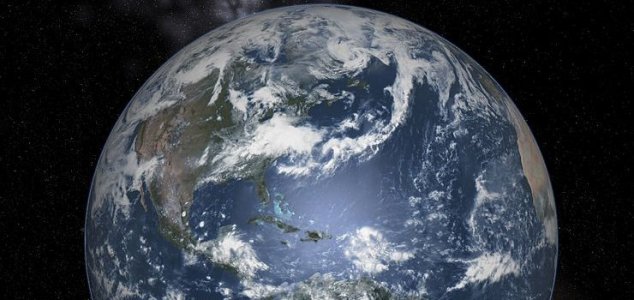Science & Technology
January 23, 2018 · 16 comments
16 comments

Earth's continents were laid out very differently in the distant past. Image Credit: CC BY-SA 3.0 NikoLang
Researchers from Curtin University concluded that the whole area must have broken away from North America around 1.7 billion years ago before colliding with what is now northern Australia.
"This was a critical part of global continental reorganization when almost all continents on Earth assembled to form the supercontinent called Nuna," said doctoral student Adam Nordsvan.
When Nuna broke apart again 300 million years later, the Georgetown region remained attached to Australia as the North American landmass drifted away.
The discovery is important because it not only reveals more about Australia's history but also provides further clues as to the shape of the Nuna supercontinent and how all the landmasses fitted together.
Evidence was also found to suggest that Georgetown's mountain range also formed around this time.
"This mountain belt, in contrast to the Himalayas, would not have been very high, suggesting the final continental assembling process that led to the formation of the supercontinent Nuna was not a hard collision like India's recent collision with Asia," said study co-author Zheng-Xiang Li.
Source: Live Science | Comments (16)
Chunk of North America is part of Australia
By T.K. RandallJanuary 23, 2018 ·
 16 comments
16 comments
Earth's continents were laid out very differently in the distant past. Image Credit: CC BY-SA 3.0 NikoLang
Scientists have identified an area of Australia that broke away from North America 1.7 billion years ago.
The region in question, which today is known as Georgetown, is home to sandstone sedimentary rocks found nowhere else in Australia but that closely resemble rocks found in present-day Canada.Researchers from Curtin University concluded that the whole area must have broken away from North America around 1.7 billion years ago before colliding with what is now northern Australia.
"This was a critical part of global continental reorganization when almost all continents on Earth assembled to form the supercontinent called Nuna," said doctoral student Adam Nordsvan.
The discovery is important because it not only reveals more about Australia's history but also provides further clues as to the shape of the Nuna supercontinent and how all the landmasses fitted together.
Evidence was also found to suggest that Georgetown's mountain range also formed around this time.
"This mountain belt, in contrast to the Himalayas, would not have been very high, suggesting the final continental assembling process that led to the formation of the supercontinent Nuna was not a hard collision like India's recent collision with Asia," said study co-author Zheng-Xiang Li.
Source: Live Science | Comments (16)

The Unexplained Mysteries
Book of Weird News
AVAILABLE NOW
Take a walk on the weird side with this compilation of some of the weirdest stories ever to grace the pages of a newspaper.
Click here to learn more

Support us on Patreon
BONUS CONTENTFor less than the cost of a cup of coffee, you can gain access to a wide range of exclusive perks including our popular 'Lost Ghost Stories' series.
Click here to learn more
Earth, Natural Disasters and the Environment
Ancient Mysteries and Alternative History
Science and Technology
Space: Exploration and Spaceflight
Total Posts: 7,768,310 Topics: 325,021 Members: 203,765
Not a member yet ? Click here to join - registration is free and only takes a moment!
Not a member yet ? Click here to join - registration is free and only takes a moment!



































Please Login or Register to post a comment.